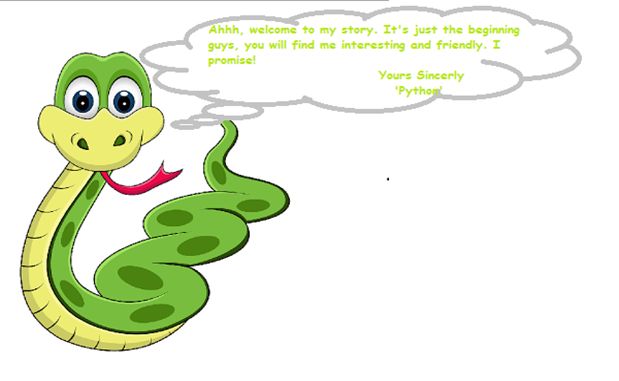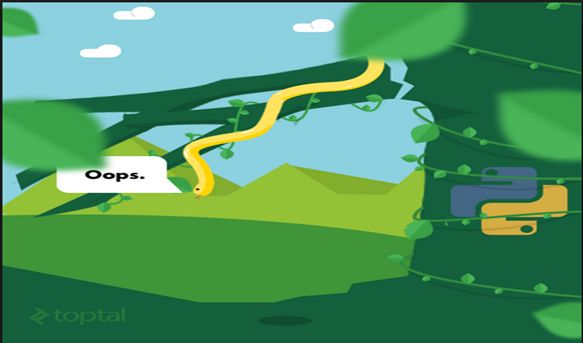Python Introduction
Introduction
This chapter describes why we use python, and what are some of the features of Python.
Python

“It always hurts if people pronunciate your name incorrectly for some reason such as ascent. So before narrating my story and feature I want to tell you guys how to pronounce my name because it makes me feel good.”
Pronunciation- "Py-Tho-N"
I hope now I am clear, so let's explore the features of Python one by one.
“If am saying Python is simple and easy to use, then don't just blindly believe me; just code in it and feel the difference.”
Simple
Reliable
Interpreted
Reusability
- File I/O.
- System Calls.
- Sockets.
- Interface Toolkits.
- GUI Toolkits.
These cool features make Python a "Procedure Oriented Language".
If you are an object-oriented guy and can't dream apart or over it, then Python can be a new host for you. It's both procedure-oriented as well as object-oriented like in .NET, C++, Java, and some others.
 If I am saying it is open source then that means it's free (as we know) and we the programmers and geeks love the things that come free and easy to us.
You can read what works behind the Python, can read it's source code, make changes in it, and many other things. Aren't all these features enough to make Python user-friendly or a lovable language? Yes, they are.
Since it's open-source, it supports this feature too. You can run Python or I can say Python allows you that you can make it run in nearly any environment.
Python runs happily in the environments Windows, Mac, Linux, Solaris, Amiga, AROS, Playstation, Pocket PC, FreeBSD, and several others.
Python is not only much simpler than any other language (that offers a very high level of features) but also easily understandable and readable. Programs written in Python are much shorter than any other programming language like C, C++, Java, and so on. (Kindly don't ask why .NET isn't here).
The reasons behind it are:
If I am saying it is open source then that means it's free (as we know) and we the programmers and geeks love the things that come free and easy to us.
You can read what works behind the Python, can read it's source code, make changes in it, and many other things. Aren't all these features enough to make Python user-friendly or a lovable language? Yes, they are.
Since it's open-source, it supports this feature too. You can run Python or I can say Python allows you that you can make it run in nearly any environment.
Python runs happily in the environments Windows, Mac, Linux, Solaris, Amiga, AROS, Playstation, Pocket PC, FreeBSD, and several others.
Python is not only much simpler than any other language (that offers a very high level of features) but also easily understandable and readable. Programs written in Python are much shorter than any other programming language like C, C++, Java, and so on. (Kindly don't ask why .NET isn't here).
The reasons behind it are:
Object-Oriented

Open Source
Portable
Understandable and Readable
- High-level Data Types.
- Flexibility in Arrays.
- No variable or argument declaration is necessary.
- Many more
Extensible

Comparison of various languages
Goodbye World | C++
- #include<iostream.h>
- Int main()
- {
- cout << “GoodBye World!”;
- }
Output
GoodBye World
GoodBye World | Java
- public class Main
- {
- public static void main(String[] args)
- {
- System.out.println("GoodBye World!");
- }
- }
Output
GoodBye World
GoodBye World | C#
- using System;
- public class Hello2
- {
- public static void Main()
- {
- Console.WriteLine("GoodBye World!");
- }
- }
Output
GoodBye World
GoodBye World | Python
- Print “GoodBye World!”
Output
GoodBye World
Conclusion
In the next chapter, we will discuss python tokens.
Author
Abhishek Jaiswal
97
19.8k
9.7m
